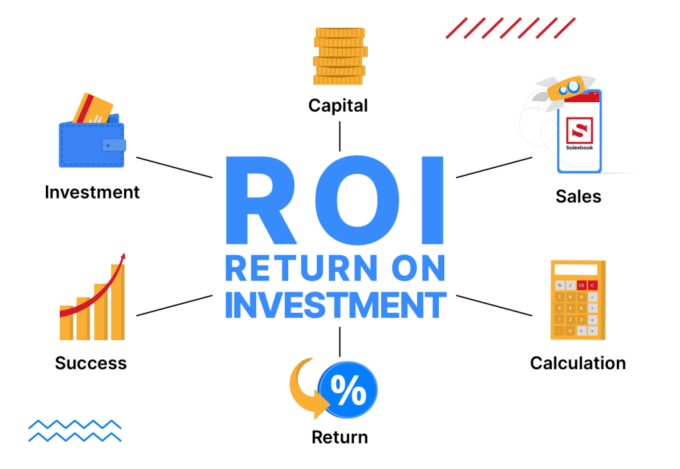Employee benefits play a crucial role in any organization’s overall success and sustainability. Beyond offering competitive salaries, companies must strategically design benefits packages to attract, retain, and motivate top talent. However, understanding the return on investment (ROI) of these benefits is paramount for businesses in making informed decisions regarding resource allocation and maximizing employee satisfaction and productivity.
In this blog post, we will understand the concept of ROI in employee benefits, offering valuable insights from consultants who specialize in optimizing these programs. By comprehensively examining the ROI of employee benefits, we aim to provide employers and HR professionals with the necessary knowledge and tools to make data-driven decisions that benefit both their employees and the organization as a whole.
ROI in Employee Benefits

Return on Investment (ROI) is a crucial metric in assessing the effectiveness and profitability of investments, including those directed toward employee benefits. It serves as a financial ratio, comparing the net gain from an investment to its initial cost, typically expressed as a percentage. For businesses, comprehending ROI in the context of employee benefits is crucial for informed decision-making and optimizing investments in human capital.
ROI in employee benefits encapsulates tangible and intangible value derived from these programs concerning the resources invested. Tangible benefits are quantifiable and directly measurable outcomes, encompassing cost savings, increased productivity, and improved retention rates. These benefits translate into reduced healthcare expenses, lower absenteeism rates, heightened employee engagement, and longer employee tenure, all contributing to organizational efficiency and profitability.

On the other hand, intangible benefits are less quantifiable but equally significant. They include enhanced employee satisfaction, a positive company culture, and a competitive advantage within the industry. These intangible aspects shape the overall employee experience, fostering a supportive work environment conducive to productivity, innovation, and employee loyalty.
Measuring the ROI of employee benefits necessitates the utilization of relevant metrics and evaluation techniques to assess their impact on business outcomes. Key metrics may include the cost per employee, health and wellness indicators, turnover rates, and employee engagement surveys. By tracking and analyzing these metrics, businesses can gain insights into the performance of their benefits programs and make data-driven decisions to optimize resource allocation and maximize returns.
Ultimately, a comprehensive understanding of ROI empowers organizations to prioritize initiatives that yield the highest returns, allocate resources strategically, and cultivate a workplace culture centered on employee well-being and organizational success. By leveraging ROI as a guiding metric, businesses can enhance their competitive position, attract and retain top talent, and drive sustainable growth and profitability in the long term.
The Consultant’s Perspective

Employee benefits consultants are crucial in helping organizations navigate the complex landscape of employee benefits and maximize the return on investment (ROI) from these programs. With their expertise and industry knowledge, consultants offer valuable insights and strategic guidance to businesses seeking to optimize their benefits offerings.
Consultants provide a holistic perspective on employee benefits, considering workforce demographics, industry trends, regulatory requirements, and organizational goals. By conducting thorough assessments and analyses, consultants identify areas for improvement and recommend tailored solutions that align with the company’s objectives and budgetary constraints.
Moreover, consultants leverage their networks and relationships with benefits providers to negotiate competitive pricing and secure favorable client terms. This ensures that organizations receive the best value for their investment in benefits programs, maximizing ROI while minimizing costs.
Additionally, consultants assist in implementing and communicating benefits initiatives, ensuring that employees understand and appreciate the value of the programs offered to them. Consultants foster greater engagement and participation in benefits programs through targeted communication strategies and employee education campaigns, further enhancing their effectiveness and ROI.
Strategies for Maximizing Benefits ROI
Maximizing the return on investment (ROI) from employee benefits requires a strategic and proactive approach that aligns with the organization’s goals and priorities. Employers can implement several key strategies to enhance the effectiveness and value of their benefits programs, ultimately driving greater ROI.
One strategy is customization and personalization, tailoring benefits offerings to meet employees’ diverse needs and preferences. By offering a flexible menu of benefits options and allowing employees to choose packages that best suit their individual circumstances, organizations can increase satisfaction and engagement, leading to higher ROI.
Communication and engagement are also critical components of maximizing benefits ROI. Employers should invest in clear, consistent, and targeted communication strategies to educate employees about the available benefits options, their value, and how to access them. Additionally, employers should encourage employee feedback and participation in benefits planning and decision-making processes, fostering a sense of ownership and investment in the programs offered.
Data-driven decision-making is another essential strategy for maximizing benefits ROI. By regularly monitoring and analyzing metrics such as healthcare utilization, employee turnover, and engagement levels, organizations can identify trends, opportunities, and areas for improvement. This enables employers to make informed decisions about resource allocation, program design, and vendor selection, optimizing ROI over time.
Furthermore, employers should prioritize continuous evaluation and adjustment of benefits programs to align with evolving business needs and employee preferences. Regularly soliciting employee feedback, conducting satisfaction surveys, and benchmarking against industry standards can help organizations identify opportunities for enhancement and innovation, ultimately driving greater ROI.
Challenges and Considerations

Maximizing return on investment (ROI) from employee benefits presents several challenges and considerations for organizations. Budget constraints may limit investment opportunities, while the dynamic nature of the workforce requires constant adaptation of benefits offerings. Additionally, resistance to change and the complexity of regulatory compliance add further hurdles to benefits management.
However, by strategically allocating resources, staying abreast of regulatory changes, and fostering open communication, organizations can overcome these challenges and enhance the effectiveness of their benefits programs. Through proactive measures and strategic decision-making, organizations can navigate these obstacles and realize the full potential of their investments in employee benefits.
Conclusion
Understanding and maximizing return on investment (ROI) from employee benefits is crucial for organizations striving to attract, retain, and motivate top talent while driving sustainable growth. By assessing the tangible and intangible benefits of benefits programs and implementing strategic initiatives, organizations can achieve greater ROI and foster a workplace environment that promotes employee satisfaction and productivity.
Despite challenges like budget constraints and regulatory compliance, organizations can overcome them by prioritizing data-driven decision-making and effective communication with employees. By investing in the right programs and adapting to changing workforce needs, organizations can position themselves as employers of choice. To get in touch with the employee benefits consultant.











